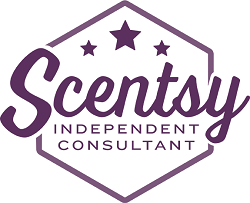
Do you like to travel? How about travel in style on all-expense paid trips? See our Scentsy Incentive Trip Destinations over the years:
Scentsy Consultants have the ability to earn FREE trips each year. Take a look below at the incentive trip and Scentsy Family Reunion (annual convention) destinations by year:
Scentsy Incentive Trips 2023
- Charlotte, North Carolina / N. American Scentsy Family Reunion
- TBD / European Scentsy Family Reunion
- TBD / Australian Scentsy Family Reunion
- Fiji
- Monte Carlo
- Mediterrean Cruise
- Los Cabos
- Quebec City
- New York City
Scentsy Incentive Trips 2022
- Salt Lake City, Utah / N. American Scentsy Family Reunion
- London, England / European Scentsy Family Reunion
- Gold Coast / Australian Scentsy Family Reunion
- Alaskan Cruise: Quantum of the Seas, Royal Caribbean
- Norwegian Fjords Cruise: Anthem of the Seas, Royal Caribbean
- South Pacific Cruise: Ovation of the Seas, Royal Caribbean
- Netherlands and Belgium River Cruise: MS Amadeus Imperial
Scentsy Incentive Trips 2021 – Thanks Rona. Trips Canceled in 2021. Reunions held virtually.
- Walt Disney World – Orlando. Florida
- Broadmoor Resort – Colorado Springs Colorado
Walt Disney World – Paris FranceYanuca Island – FijiCharlotte NC / N. American Scentsy Family ReunionParis, UK / European Scentsy Family ReunionBrisbane, AU / Australian Scentsy Family Reunion
Scentsy Incentive Trips 2020 – Thanks Rona. Trips Canceled in 2020.
New York to Bermuda on Royal Caribbean’s Adventure of the SeasAmsterdam, Rotterdam, Antwerp and more on an exclusive Amadeus river cruiseSalt Lake City UT / N. American Scentsy Family ReunionBirmingham, UK / European Scentsy Family ReunionBrisbane, AU / Australian Scentsy Family Reunion
Scentsy Incentive Trips 2019
- British Columbia, Canada
- Marco Island, FL
- Montreux, Switzerland
- Queenstown, New Zealand
- Austin TX / N. American Scentsy Family Reunion
- Amsterdam, Netherlands / European Scentsy Family Reunion
- Gold Coast / Australian Scentsy Family Reunion
Scentsy Incentive Trips 2018
- Mediterranean Cruise
- Royal Caribbean Cruise
- Cancun Mexico
- Anaheim, CA – Scentsy Family Reunion
Scentsy Incentive Trips 2017
- New York City
- African Safari
- Punta Cana (for N. American consultants)
- Kansas City/ N. American Scentsy Family Reunion
- Rome Italy (for European consultants)
- Edinburgh Scotland / European Scentsy Family Reunion
- Great Barrier Reef (for Australian consultants)
- Melbourne / Australian Scentsy Family Reunion
Scentsy Incentive Trips 2016
- Royal Caribbean’s Independence of the Seas Cruise Cozumel Mexico
- Nashville / Scentsy Family Reunion
- Disney World
- Singapore (for Australian consultants)
- Brisbane / Scentsy Family Reunion
- Cyprus (for European consultants)
Scentsy Incentive Trips 2015
- Royal Caribbean Cruise originating from & returning to Puerto Rico (for North American consultants)
- Las Vegas / Scentsy Family Reunion
- Tenerife Canary Islands (for European consultants)
- Bali (for Australian consultants)
Scentsy Incentive Trips 2014
- Greece
- Atlantis, Bahamas
- St. Louis/Scentsy Family Reunion
Scentsy Incentive Trips 2013
- Whistler, British Columbia
- Washington, D.C.
- Charleston, South Carolina
- New York City
- Oahu, Hawaii
- Costa Rica
Scentsy Incentive Trip 2012
- Punta Cana, Dominican Republic
Scentsy Incentive Trip 2011
- Disney World
Scentsy Incentive Trips 2010
- Cable Cars to Coconuts: San Francisco, CA & Kona, Hawaii
- Beantown Bash, Boston
Scentsy Incentive Trips 2009
- Banff Canada
- Alaskan Cruise
Scentsy Incentive Trip 2008
- Cancun, Mexico
Scentsy Incentive Trip 2007
- Hawaii
Pack your bags and sunscreen and let’s go! Oh wait … before you do, one minor little detail, you have to get your own consultant account (join, enroll) and then earn the trip. Both very doable! Get your own Scentsy account here.

 Remember, a qualifying party consists of 200 PRV points. It’s also the amount of PRV points required each month to stay active*. Here are 50 ways to earn 200 PRV.
Remember, a qualifying party consists of 200 PRV points. It’s also the amount of PRV points required each month to stay active*. Here are 50 ways to earn 200 PRV.


